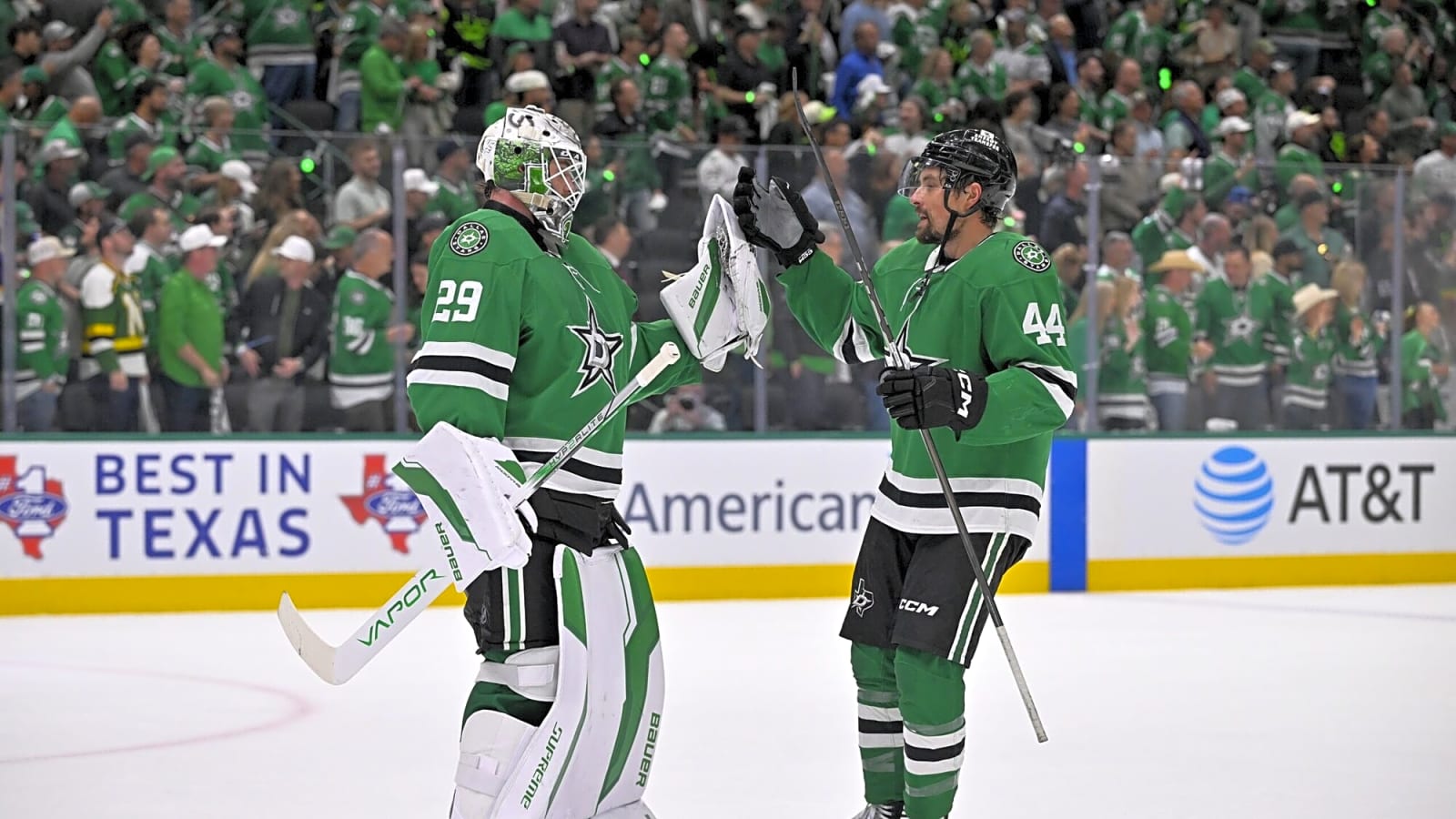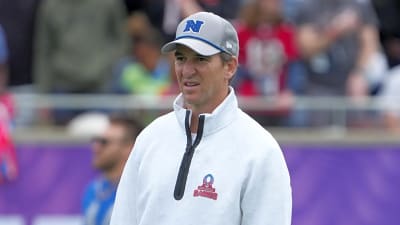
Before every series, I emphasize why controlling 5v5 play is crucial.
It’s the longest part of any hockey game. Winning, or at least breaking even, during 5v5 ensures your team stays competitive. Special teams are important and can sometimes swing outcomes. But 5v5 remains the core element of the game.
Entering this series, the Dallas Stars challenged that logic. They were the only playoff team remaining with an expected goals share below 50% at 5v5.
Yet their power play was dominant. Dallas entered Game 1 leading the NHL with 12 power-play goals. Without question, special teams carried them into the Conference Finals.
Last night, after two periods, the Oilers led comfortably 3-1. At 5v5, they held a 2-1 goal advantage and controlled 61% of expected goals. Everything looked good.
Then came six minutes of chaos. Just six minutes.
Only 10% of a hockey game. Yet in that brief span, the Oilers collapsed. They squandered 40 minutes of stellar play and lost Game 1 in Dallas.
What went wrong? And what’s next? Let’s break down the tape.
What Caught My Eye?
Controlling The Middle of The Ice
For most of this game, including even when they were behind, the Oilers controlled the middle of the ice in all three zones. This control allowed them to create offence and to defend very well.
The key to the control was F3. In almost all situations, the Oilers’ structure of having a well-positioned F3 led to positive plays. It started very early in the game.
Watch this clip of Connor McDavid and how he maintains his defensive positioning in the middle of the ice. It leads to an immediate breakout and an attack up the ice.
Here’s another example in the offensive zone from Connor Brown.
Brett Kulak pinches down, and Adam Henrique covers over the top. Watch Brown slowly leak up the zone, but stays in the middle of the ice closer to the puck than his defender. The puck comes to him, and because of his positioning, he can create a neat little offensive play.
One final clip that happened all night. The Oilers’ F3 in the offensive zone blunted the Stars’ attack all night.
Watch the work of Ryan Nugent-Hopkins to maintain a good F3 in the Dallas zone. When he sees the puck transition back up the ice, look at his response. I’ve slowed this down to better show his reaction. He’s hard back on the check which allows Kulak to defend the blueline on the entry. The play gets broken up and the Oilers are headed back up the ice.
There will be a lot of narratives coming out of Game 1, but this one is for certain. If the Oilers maintain control of the middle of the ice, it will lead to positive results.
The Dallas Defensive System
In the series preview, we highlighted the hybrid defensive system Dallas utilizes in its zone coverage. When the puck is down low, Dallas operates with a “zone plus one” structure, unless the puck pops loose along the boards. However, once the opposing team moves the puck up toward the blue line, Dallas shifts aggressively into man-to-man coverage.
This aggressive shift can create opportunities, like the one that led to Tyler Seguin’s goal last night. Watch closely here as Leon Draisaitl carries the puck up the wall. Notice the trap Dallas executes, applying pressure from both sides. In this situation, the safer move for Edmonton would have been to cycle the puck back down into the corner to maintain possession. Instead, Draisaitl tries to force the play, resulting in a turnover.
Jake Walman also finds himself out of position here. Ideally, you’d like this defenseman positioned centrally and higher on the ice, even outside the zone if necessary, to avoid getting caught in transition. Because he’s not in this optimal spot, the turnover quickly turns into a dangerous counterattack for Dallas.
In situations like these, discretion and puck management are critical. Dallas capitalized effectively on Edmonton’s mistake, showcasing exactly why their hybrid defensive approach can be so effective.
The Oilers also had some success against this defensive structure. Have a look at the Oilers first goal. In particular, watch not only the switching, but look at the defensive positioning of Darnell Nurse to keep his body between the puck and his net. This is opposed to the situation with Jake Walman.
This should be a feature of this series. Can the Oilers exploit this structure? Or will Dallas win the day? In Game 1, the teams played to a draw.
Chip and Chase
The Dallas Stars’ top four defencemen all played over 20 minutes, with Harley and Heiskanen playing over 24 minutes each. The Oilers need to find some advantage in this situation. During the first intermission, I posted the following on social media:
My other thought about 1st period in the to early “what happens in this series” is if the Stars are going 4D this hard, the Oilers need to get the puck in behind them on soft chips and make Dallas D retrieve constantly. Instead of the stop and curl play inside the blue line.
— bcurlock (@bcurlock) May 22, 2025
The Oilers should have an advantage here, and they need to exploit it. Here’s one way they can do so. Last night, it worked to perfection on the Oilers’ third goal.
Watch this great play by Kasperi Kapanen and, more prominently, Vasily Podkolzin. Kapanen lays in a nice soft chip that allows Podkolzin time to attack the puck. Note this is against Heiskanen and Harley. Podkolzin recovers the puck and now the Oilers are on the attack.
In this case, the play led to a goal for the Oilers. Perhaps as important, the Oilers need to use this strategy to try and wear down these four defencemen throughout this series. If the Stars are going to continue to run this group of four this heavily, the Oilers need to find out if they can handle the minutes under severe duress.
The Edmonton Defence
Yes, I understand that Paul Coffey cannot go out and make the pass for his defence group. Yes, I understand he cannot be the guy counted on to clear the net front. I get all of that.
However, coaching decisions do matter, and they matter significantly. A coach’s primary role is to place players in positions where they are best able to succeed, especially given how opponents attack the defensive zone.
Watching the Oilers’ defence, I’m often left puzzled by certain repeated situations. Last night’s game against the Stars featured two clear examples, situations we’ve seen happen repeatedly, that highlight this issue. One of these led directly to the Stars netting three goals in just six minutes.
But let’s first look at an earlier example from the first period, one that fortunately didn’t cost Edmonton. It occurred immediately following a Stars icing, with Kulak and Bouchard on the ice.
When the Oilers go to the offensive zone for the face-off, Coffey leaves Kulak on the ice and plays him with Troy Stecher. This pairing has played four minutes together in the playoffs and not well.
I just do not understand this pairing, nor why it was decided to use them here. The result was almost predictable. Chaos in the Oilers zone that leads to a Kulak penalty.
A particularly puzzling decision occurred late in the second period.
Paul Coffey continues to rely heavily on Darnell Nurse and Brett Kulak in high-pressure situations. Yet, the pairing clearly isn’t effective. In 60 playoff minutes together, their expected goals percentage sits at just 47%, and they’ve been outscored 4-0.
Why doesn’t this duo work?
First, both Nurse and Kulak are left-shot defenders, which complicates their defensive zone coverage. Second, they both prefer transporting the puck rather than passing, limiting their strategic options.
Despite these clear issues, Coffey repeatedly returns to this pairing.
Last night provided another example. Late in the second period, Troy Stecher headed to the bench, and Brett Kulak stepped onto the ice. Nurse chose to remain, creating the problematic combination once again.
Typically, during the long change scenario, the far-side defenseman (in this case, Nurse) would quickly shift across to allow for an easier substitution. However, Nurse stayed put, seemingly comfortable in the situation.
Predictably, the pair struggled immediately, leading to Kulak taking a penalty. This recurring lineup choice continues to hurt the team at critical moments.
This penalty led to the Dallas Stars 3-2 goal and the start of its comeback. Yes, the penalty kill wasn’t good. However, why shoot yourself in the foot by creating an on-ice mismatch against your team? This happens too much with the Oilers.
The Penalty Kill
There isn’t much to say here. It wasn’t good.
I think the sooner Mattias Ekholm can play, even just to stabilize the penalty kill, the better. Darnell Nurse is a struggle on the penalty kill. Brett Kulak is fine, but he was in the penalty box twice last night, and that shrinks the pool of available players. Troy Stecher was put in a tough spot, having to kill a lot of time because Kulak took two penalties himself. He was exposed, and that probably needs to change.
Stuart Skinner needs to save the fourth goal against. He lost his composure at a time when he needed it most.
On a bright note, the Oilers have something with McDavid and Hyman on the penalty kill. I really like this adjustment. I think more time for this pairing on the penalty kill is on the horizon.
Thoughts and Notes From Game 1
The 11-7 lineup question will be key for both teams today and tomorrow. The Stars need another defensive pairing to step up and log extra minutes. For the Oilers, Ekholm may be returning slightly ahead of schedule. To ease him in, Edmonton could use seven defencemen, deploying Ekholm mostly on the penalty kill and limiting his 5v5 ice-time.
Stuart Skinner is getting a lot of criticism. Personally, only the fourth goal was problematic. The rest were not entirely on him, though I know that’s an unpopular view. On a positive note, I think the Oilers have found ways to challenge Jake Oettinger.
The Oilers’ third line must improve. If Connor Brown is injured, he should come off that line. Evander Kane struggles defensively and needs stronger support, and Adam Henrique needs reliable wingers to succeed. The Stars took advantage of this weak point, and Edmonton paid for it. With the top two lines likely staying intact, adjustments to the bottom six and possibly using 11 forwards and 7 defencemen could address these issues and strengthen the penalty kill.
That’s all for the Game 1 review. See you back here Saturday morning after Game 2.
More must-reads:
- How the West was won: Three most intriguing training-camp battles to watch in NHL's Western Conference
- Could Capitals cause Penguins' Sidney Crosby to change mind about trade desires?
- The 'Active three-TD catch NFL games' quiz
Breaking News
Trending News
Customize Your Newsletter
 +
+
Get the latest news and rumors, customized to your favorite sports and teams. Emailed daily. Always free!








